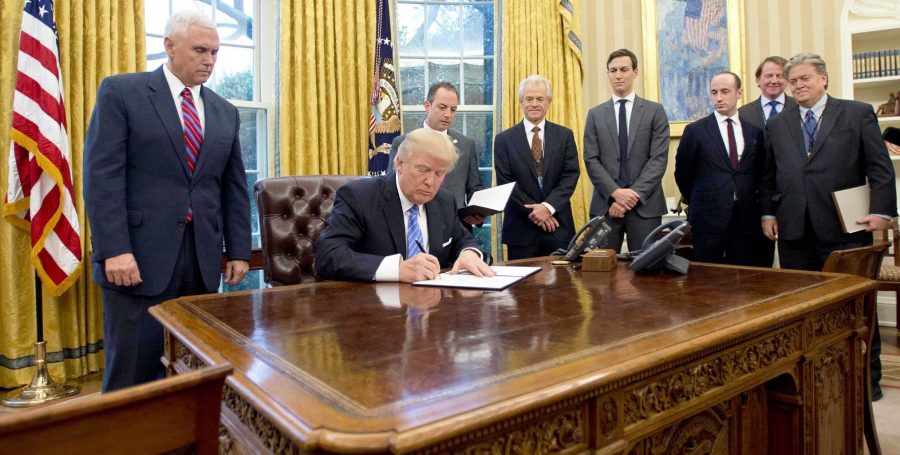As annual enrollment for Obamacare insurance approaches on Nov. 1, the law itself and the people who have come to depend on it for health coverage are both facing an uncertain future.
President Donald Trump’s recent executive actions affect the complicated insurance mechanics of the Affordable Care Act, and they haven’t been well explained in the news media. This column will explain how those changes affect you.
Congress has tried but has not been able to “repeal and replace” the law that has brought health insurance to some 10 million Americans who buy insurance on the state shopping exchanges and about 10 million more who gained access through Medicaid expansion.
The failure of Congress to pass the “repeal and replace” legislation did not mean, though, that the law would remain intact.
In mid-October, Trump’s executive action hollowed out a big chunk of the ACA, throwing insurance marketplaces into a tizzy and possibly resulting in higher prices and less coverage for many.
In the end, the president’s actions may succeed in gutting the law that has divided so many Americans.
To understand this, let’s take a step back.
Legislators who wrote the law knew that a big reason people did not buy health insurance was cost.
Most middle class families without employer coverage struggled to pay the premiums in the so-called individual market where they had to shop.
Those at the bottom of the income ladder either qualified for Medicaid or did without insurance.
About 44 million Americans did not have insurance when the law took effect four years ago.
The ACA tried to make it easier to buy coverage, and Congress did that in two ways.
It required insurers to cover all people, sick or well, who applied for coverage in the individual market and offered two kinds of subsidies to help those with lower incomes.
One comes in the form of tax credits the government advances to shoppers who buy Obamacare — compliant policies that meet certain rules and regulations, such as offering 10 essential benefits.
Prescription drug coverage is one.
Those subsidies are based on a family’s income and phase out when a family’s income exceeds 400 percent of the federal poverty level or about $98,000 for a family of four and $48,000 for a single person.
People with lower incomes receive the largest subsidies. Those tax credit subsidies are not affected by Trump’s order.
The other subsidy is called a cost-sharing subsidy, sometimes referred to as a CSR and aimed at Americans whose incomes are at or below 250 percent of the poverty line, about $62,000 for a family of four and $30,000 for an individual.
They reduce the amount of out-of-pocket spending for people who get them.
Those who qualify pay less for the coinsurance, deductibles and copayments a policy may require.
These are the subsidies on the chopping block. The president said the government will not continue funding them which means the government simply will not pay insurance companies for reducing the out-of-pocket costs to policyholders.
Policyholders will still get the subsidies unless Congress changes the law.
Insurers will have to swallow the losses, at least for now.
If you get those subsidies, you’re not off the hook, though.
Insurance companies anticipated that the president would axe the subsidies and they increased their premiums for most or all Obamacare policies, including the silver plans, the ones people must buy to receive the extra help with cost sharing.
The Congressional Budget Office just projected that premiums before the tax credits are applied would increase on average by about 20 percent.
In some states average rate increases have been much higher.
So who will be hurt the most by the Trump administration’s latest move which some experts argue undermines the stability of the health law?
Insurance companies have already prepared for this and have cushioned the blow to them by charging higher premiums to everyone who buys in the individual market.
People with incomes under 400 percent of poverty will still receive their tax credits, which will reduce their higher premiums, and they will continue to get their CSRs.
Those in the individual market who have higher incomes and receive no tax credits to lower their premiums will feel the most pain.
The Kaiser Family Foundation reports that 44 percent of buyers in the Obamacare market did not qualify for tax credits. That’s almost 7 million people.
“Ironically, it is these unsubsidized folks who have complained the loudest about Obamacare’s big premiums and deductibles,” said Washington D.C. insurance consultant Robert Laszewski. “They will now have even more to complain about.”
The administration wants to let them buy cheaper policies that cover far less than Obamacare insurance.
In a future column, I will discuss this and other moves that will further unwind the Affordable Care Act.
Trudy Lieberman is a writer for the Rural Health News Service and can be reached at [email protected].

























